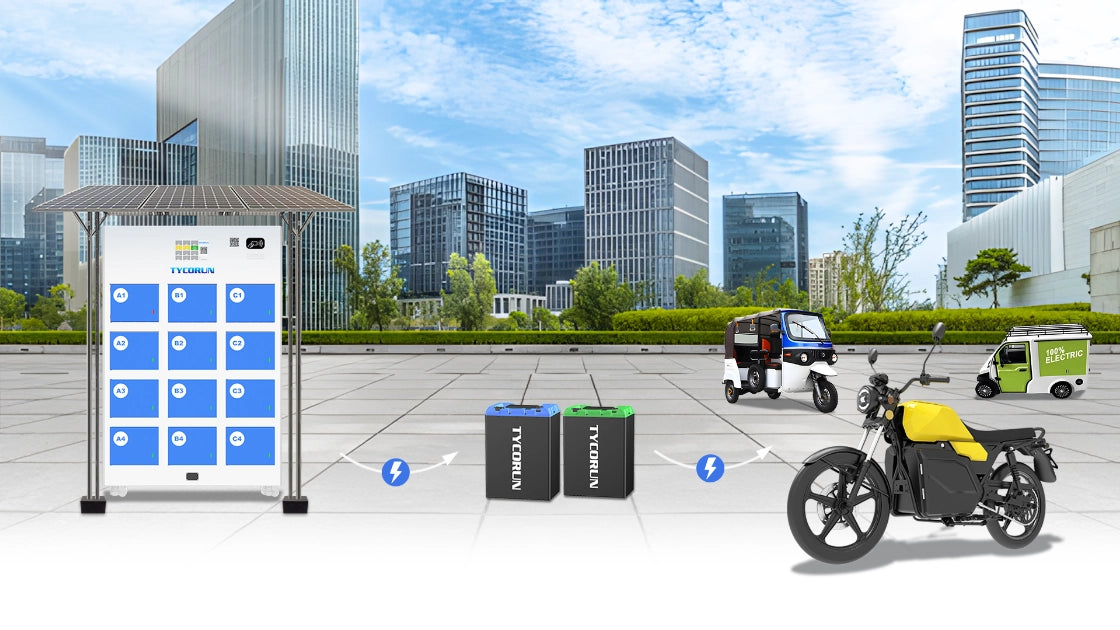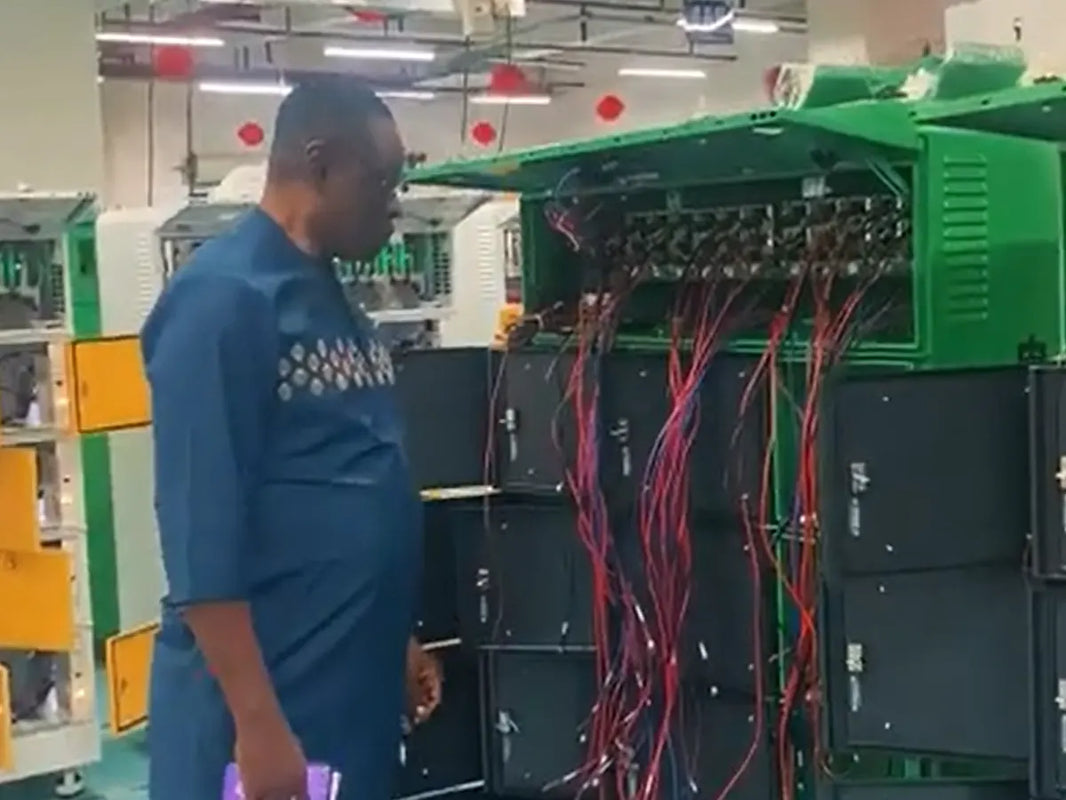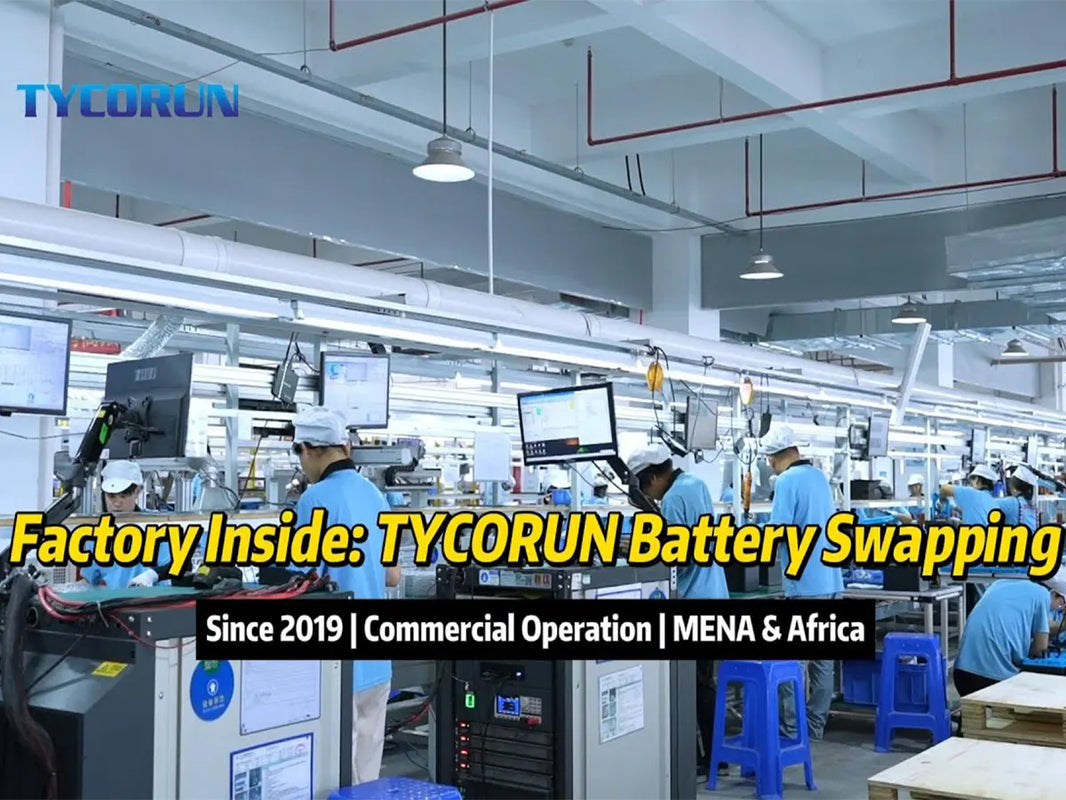
Main content:
Electric vehicles (EVs) are reshaping the way we think about transportation. But one of the biggest concerns for riders and drivers is charging time. Waiting for hours to recharge can feel inconvenient, especially for delivery fleets, commuters, and shared mobility services. This is where battery swapping steps in. Instead of charging your drained battery, you exchange it for a fully charged one in just a few minutes.
So, how does battery swapping work exactly? Let’s explore the process, the technology behind it, and how it applies in two-wheelers.
What Is Battery Swapping?
Battery swapping refers to the process of removing a discharged EV battery and replacing it with a fully charged unit at a dedicated swap station. Unlike plug-in charging, there is no waiting period—you simply swap and go.
The system not only saves time but also improves battery safety and performance because the charging process is managed centrally. That means every battery is charged under optimal conditions, reducing the risk of overcharging or overheating.
By understanding how does battery swapping work, you’ll see why this technology is becoming one of the fastest solutions to accelerate EV adoption globally.
The Core Components of Battery Swapping System
To see how does battery swapping work, it’s important to understand the four main elements that make up a swap station:

The core of the system is the modular battery pack, usually lithium ion battery pack, designed to be removed and inserted easily. Each battery has a positioning system and communicates with the station to ensure compatibility and safe operation. When placed inside the cabinet, the battery’s charging progress, health, and temperature are continuously monitored. This guarantees users always get a safe, high-performance unit.
- Mobile App and Digital Platform
Users access the service through a mobile app. By registering, verifying their identity, they can simply scan a code to swap batteries. On the operator side, the digital platform provides data on battery usage, health status, charging activity, and financial transactions. It also allows remote control of station settings and predictive analysis for future demand.
- Vehicles Compatible with Swapping
EVs designed for this system follow a “vehicle-battery separation” model. That means the battery is removable rather than permanently fixed. Currently, most two-wheelers and three-wheelers are built with swappable designs, while some cars require more advanced automation to handle larger packs.
- The Battery Cabinet
The cabinet stores, charges, and protects the batteries. Built with durable, weather-resistant materials, it includes battery swap station cooling fans, circuit boards, controllers, and screens. Since stations operate in all conditions, the cabinets are waterproof, dustproof, shockproof, and lightning-resistant to ensure reliability. These four elements work together to make the process seamless.
How Does Battery Swapping Work?
The idea behind battery swapping is very simple—you take out the empty battery and replace it with one that is already charged. When the battery is placed into the swapping station, the system automatically recognizes it and sends the battery’s details to the control system. This allows the station to track and check the battery’s condition in real time.

Inside the cabinet, the station can charge many batteries at once, often between 5 and 12, depending on how big the unit is. The smart charging system can also adjust how power is shared among the batteries, making the process more efficient. This is basically how does battery swapping work in practice: it gives electric vehicle users a quick way to exchange weak batteries for full ones, saving time when compared between battery swap vs charging.
Battery swapping work in Two-Wheeler
- Front end
Swapping the battery on a two-wheeler is made to be quick and simple. It gives riders a much faster option than waiting for normal charging, which is very helpful for delivery and courier drivers. All you need is a smartphone with the app that manages the battery swap system for your two-wheeler.
For example, at TYCORUN—best battery swap station system, riders only need to scan the QR code on the machine, make the payment, and within seconds the cabinet will open, giving out a fully charged battery. An even easier way is using an NFC card — just scan the card, and in only a few seconds, you’ll get your fresh, full battery.

- Back-end
The back-end is how the system is monitored of a battery swap station makes sure the whole swapping process is safe and smooth. It checks the battery, communicates with the vehicle, and runs quick safety tests in real time.
Through the system, you can also view useful details such as how many batteries are in the station, their charging status, and even records of swaps and earnings. If you’re curious about how does battery swapping work and how the back-end system manages everything, you can check the video for a full explanation.
Can the Same Battery Swapping Station Support Different Batteries?
The system uses smart technology to identify the battery type and charge it safely. It also allows separate charging and lets users see battery information in real time, making it more convenient and reliable. Because of this, many riders appreciate the system as it gives them more choices.
- Works with different battery sizes
One TYCORUN station can handle multiple battery types, including 76V 30Ah LiFePO4 battery, 60v 30ah lithium battery, and 72V 50Ah swappable lithium batteries. This means you don't need separate stations for different batteries—everything can be managed in one place.
The system also has automatic recognition. When you insert a battery, it quickly checks what type it is and adjusts the charging process. This makes swapping faster, safer, and ensures the battery is charged the right way. It also shows users how to use a battery swap station correctly without worrying about mistakes or damage.
- Smart functions for users
The station supports separate charging, which helps reduce extra costs for users. Another useful feature is real-time viewing. Riders can check how many batteries are available at nearby stations before they arrive.
These features explain part of how does battery swapping work, showing that it's not only about switching batteries but also about managing them safely and efficiently through intelligent systems.
TYCORUN Battery Swap System Solution
As a leader in swappable battery manufacturer, TYCORUN Battery Swap makes powering electric two- and three-wheelers faster, smarter, and more flexible:
- Supports multiple voltages in one station
The units work with 60V, 72V, and 76V batteries—all in the same cabinet, giving riders more flexibility and fewer worries about compatibility.
- Smart battery recognition and safe charging
When you insert a battery, the system automatically detects its voltage and charges it correctly and safely. This ensures the swap process is smooth and prevents damage.
- Clean, fast, and flexible swapping experience
Riders can swap batteries with a quick QR code scan or using NFC card swapping without internet. The app also shows how many batteries are available nearby for an even smoother experience. This is a perfect example of how does battery swapping work—a quick, tech-driven process made user-friendly.
- Remote management and real-time tracking
The system supports functions like dynamic power distribution, weather protection (IP54), remote monitoring, and data tracking also works perfectly during outages—all to keep operations safe and efficient.

FAQ
1. Why can't most electric vehicle batteries be swapped?
Most electric vehicle have batteries built inside the vehicle, so they can't be removed easily. To swap batteries, EV need special designs, common standards, and support from carmakers and stations.
2. What types of batteries are supported?
Most battery swapping stations work with lithium-based batteries, such as: Lithium-ion (Li-ion) – common in e-scooters and e-bikes. Lithium Iron Phosphate (LiFePO4) – safer, longer lifespan, and stable. Other lithium variants depending on the vehicle model and station design. Some advanced stations, like TYCORUN Battery Swap, can handle multiple voltages (48V, 60V, 72V) with smart recognition.
What's the difference between battery swapping and charging stations?
Swapping = very fast, exchange battery in minutes. Charging = slower, but you keep your own battery.
Related Article: Battery Swapping Station Classification, How To Use Battery Swap Station Correctly, Best top 10 battery swap station companies in China
















